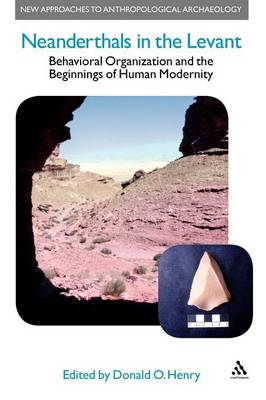The volume traces the controversy that revolves around the bio-cultural relationships of Archaic (Neanderthal) and Modern humans at global and regional, Levantine scales. The focus of the book is on understanding the degree to which the behavioral organization of Archaic groups differed from Moderns. To this end, a case study is presented for a 44-70,000 year old, Middle Paleolithic occupation of a Jordanian rockshelter. The research, centering on the spatial analysis of artifacts, hearths and related data, reveals how the Archaic occupants of the shelter structured their activities and placed certain conceptual labels on different parts of the site. The structure of Tor Faraj is compared to site structures defined for modern foragers, in both ethnographic and archaeological contexts, to measure any differences in behavioral organization. The comparisons show very similar structures for Tor Faraj and its modern cohorts. The implications of this finding challenge prevailing views in the emergence of modern human controversy in which Archaic groups are thought to have had inferior cognition and less complex behavioral-social organization than modern foragers. And, it is generally thought that such behaviors only emerged after the appearance of the Upper Paleolithic, dated some 10-20,000 years later than the occupation of Tor Faraj.
- ISBN10 0826458033
- ISBN13 9780826458032
- Publish Date 1 October 2003
- Publish Status Out of Print
- Out of Print 1 August 2023
- Publish Country GB
- Publisher Bloomsbury Publishing PLC
- Imprint Leicester University Press
- Format Hardcover
- Pages 338
- Language English
